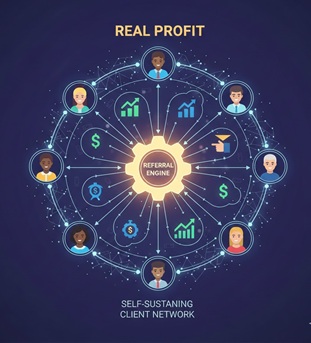In the fast-paced world of business, brands are constantly evolving. What resonated with your audience five years ago might feel outdated today. This is where a brand refresh comes in – an exciting opportunity to revitalise your image, reconnect with your target market, and propel your business forward. However, many companies jump straight into the visual aspects of a refresh, eager to see new logos and vibrant colour palettes. While tempting, this “design-first” approach often misses the mark. The true secret to a successful brand refresh lies in a crucial, often overlooked first step: the comprehensive brand audit.
Think of it like building a house. You wouldn’t start picking out paint colours and furniture before inspecting the foundation, understanding the existing structure, and assessing what needs repair or improvement. A brand refresh is no different. An audit provides that essential foundation, revealing the strengths, weaknesses, opportunities, and threats within your current brand landscape. It’s about understanding why you need a refresh before deciding how to execute it visually.
Why Audit First? The Hidden Power of Strategic Insight
A thorough brand audit goes far beyond aesthetics. It’s a deep dive into every facet of your brand, both internal and external. Here’s why it’s non-negotiable for a truly successful refresh:
1. Uncover Your True Brand Identity: Before you can change who you are, you need to understand who you are currently perceived to be. An audit examines your existing mission, vision, values, and brand personality. Is your current messaging consistent with these pillars? Do employees understand and embody them? This internal alignment is critical before presenting a new face to the world.
2. Evaluate Current Brand Performance: How is your current brand performing in the market? An audit delves into key metrics such as brand awareness, customer perception, market share, and sales data. Are there specific areas where your brand is underperforming? Are you attracting the right customers? Understanding these performance indicators provides tangible data to guide your refresh strategy.
3. Understand Your Audience (Again): Your target audience isn’t static. Demographics shift, preferences change, and new segments emerge. A brand audit involves revisiting your ideal customer profiles, conducting market research, and analysing customer feedback. What do your customers truly think and feel about your brand? What are their pain points and aspirations? This insight is invaluable for crafting a refresh that genuinely resonates.
4. Analyse the Competitive Landscape: Who are your competitors, and how are they positioning themselves? An audit meticulously examines their branding, messaging, and market strategies. Where do you stand out, and where do you blend in? Identifying gaps and opportunities within the competitive landscape allows you to carve out a unique and compelling position for your refreshed brand.
5. Identify Inconsistencies and Inefficiencies: Over time, brands can accumulate inconsistencies across various touchpoints. Your website might use different messaging than your social media, or your marketing materials might not align with your customer service experience. An audit meticulously maps out all brand touchpoints, identifying areas of misalignment and inefficiency that need to be addressed in the refresh. This ensures a cohesive and seamless brand experience for your customers.
6. Build a Data-Driven Strategy: Without an audit, your brand refresh is based on assumptions and subjective opinions. With an audit, you’re armed with concrete data and insights. This allows you to develop a strategic roadmap for your refresh, ensuring that every design decision, every messaging change, and every marketing initiative is backed by evidence and aimed at achieving specific business objectives.
The Audit Process: What to Look For
A comprehensive brand audit typically involves several key areas:
- Internal Stakeholder Interviews: Gathering perspectives from leadership, marketing, sales, product development, and customer service.
- Customer Surveys and Focus Groups: Direct feedback from your target audience.
- Website and Digital Presence Analysis: Reviewing SEO performance, user experience, content quality, and social media engagement.
- Competitive Analysis: Examining competitor branding, messaging, and market position.
- Brand Messaging and Tone of Voice Review: Assessing consistency and effectiveness across all communications.
- Visual Identity Assessment: Evaluating your logo, colour palette, typography, imagery, and overall aesthetic.
- Brand Perception Research: Understanding how your brand is perceived by internal and external audiences.
From Audit to Impactful Design
Once the audit is complete, you’ll have a clear understanding of your brand’s current state and a detailed roadmap for its future. This is when the exciting work of design truly begins. Armed with strategic insights, your design team can create a visual identity and messaging that is not only aesthetically pleasing but also strategically aligned with your business goals, resonant with your audience, and differentiated from your competitors.
Imagine the difference: instead of guessing what might look good, you’re designing with purpose, knowing exactly who you’re speaking to, what you want to achieve, and how to stand out. This audit-first approach transforms a mere cosmetic makeover into a powerful strategic initiative, ensuring your brand refresh delivers tangible results and sets your business up for sustained success.
Don’t fall into the trap of design without direction. Invest the time in a thorough brand audit, and unlock the true secret to a brand refresh that not only looks good but also performs exceptionally.
Who we are: Funded.com is a platform that is A+ BBB accredited over 10+ years. Access our network of Angel Investors, Venture Capital or Lenders. Let us professionally write your Business Plan.












